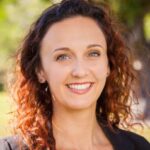Humans have been manipulating food colors since 400 BC. That’s why supermarket apples are waxed, dyed, and sold under flattering lights – the redder the apple, the sweeter and fresher we perceive them. Certain colors are associated with a flavor, which is hardwired from our primitive years when our brains relied primarily on our eyes and secondarily on our nose to figure out what was safe to eat. That sense of protection is one of the many reasons chefs take their time with presentation. We are hardwired to communicate with the outside world through our senses.
Death to green ketchup
In 2000, Shrek was a blockbuster hit and to capitalize on its momentum, Heinz created green ketchup. It let kids indulge their imaginations in Shrek’s ogre world without straying too far from the norm, especially with their food choices. Parents bought the product for their children as a novelty product: fun for gatherings and parties. These same adults, however, would not make the purchase for themselves.
Heinz was quick to capitalize on its early success by releasing additional colors such as orange, purple, teal, blue, and pink. Ultimately, a staggering 25 million units were sold. So why are they not on th shelves today? Once the next blockbuster came out and the kids moved on, green ketchup was no longer appealing. The formula had to be changed to accommodate the novelty color, and around this time food coloring started getting negative press, so green ketchup was a short-lived phenomenon. The lesson is that a new color may be appealing to consumers, but the means of achieving it may also turn them away from your product.
Taste with color
Many packages today have a picture of the contents within, displayed to entice consumers. If you do this, stay true to the authenticity of your product to keep your brand reputable. There are numerous Instagram accounts dedicated to the stark contrast between advertised fast food products and the reality. Consumers will react to the enhanced color, but not always in the way manufacturers want: conscientious mothers frown on the food dye necessary for the visual punch up. Make sure you are not using any means perceived as unhealthy by your target audience.
Connoting flavor
The human race judges food based on its color and presentation. Each of our senses has a line to the brain that helps us determine the safety and flavor of consumables. Yellow may be sour like a lemon, and pink will be anticipated as sweet. Presentations that rely on color do not stop with food products; cigars use color as well to connote flavor. The cigar is a status symbol and one of masculinity. The darker the wrapper, the increased bragging rights of the smoker.
50 Shades of brown
Cigars are products of the earth that use color to declare flavors. Most cigars, unless painted, are some variant of brown. Light hues equate to a lighter flavor while darker shades tell the purchaser that the cigar will be earthier. There are seven classifications of cigar flavors “based on the flavor of the wrapper. The longer the wrappers are fermented, the more saturated they become. A cigar connoisseur will be able to distinguish the depth of flavor via their eyes signaling to their brain. The depths of the hues of cigars and foods signals to the brain the degree of freshness and desirability. A brown steak could be perceived as fresh whereas an apple would not be.
Takeaway
Humans are hardwired to check for the safety and appeal of foods based on their eyes signaling to the brain. This biology is true for consumables and also cigars, a tobacco product wrapped in fermented leaves which affect the degree of flavor. Take the time to present your product in the most visually appealing manner possible because the brain relies on the eye to determine whether a consumable is desirable.
Are you looking for a savvy food packaging design agency to help you with your new product? Contact us today.
For more resources, check out our food packaging design guide.



